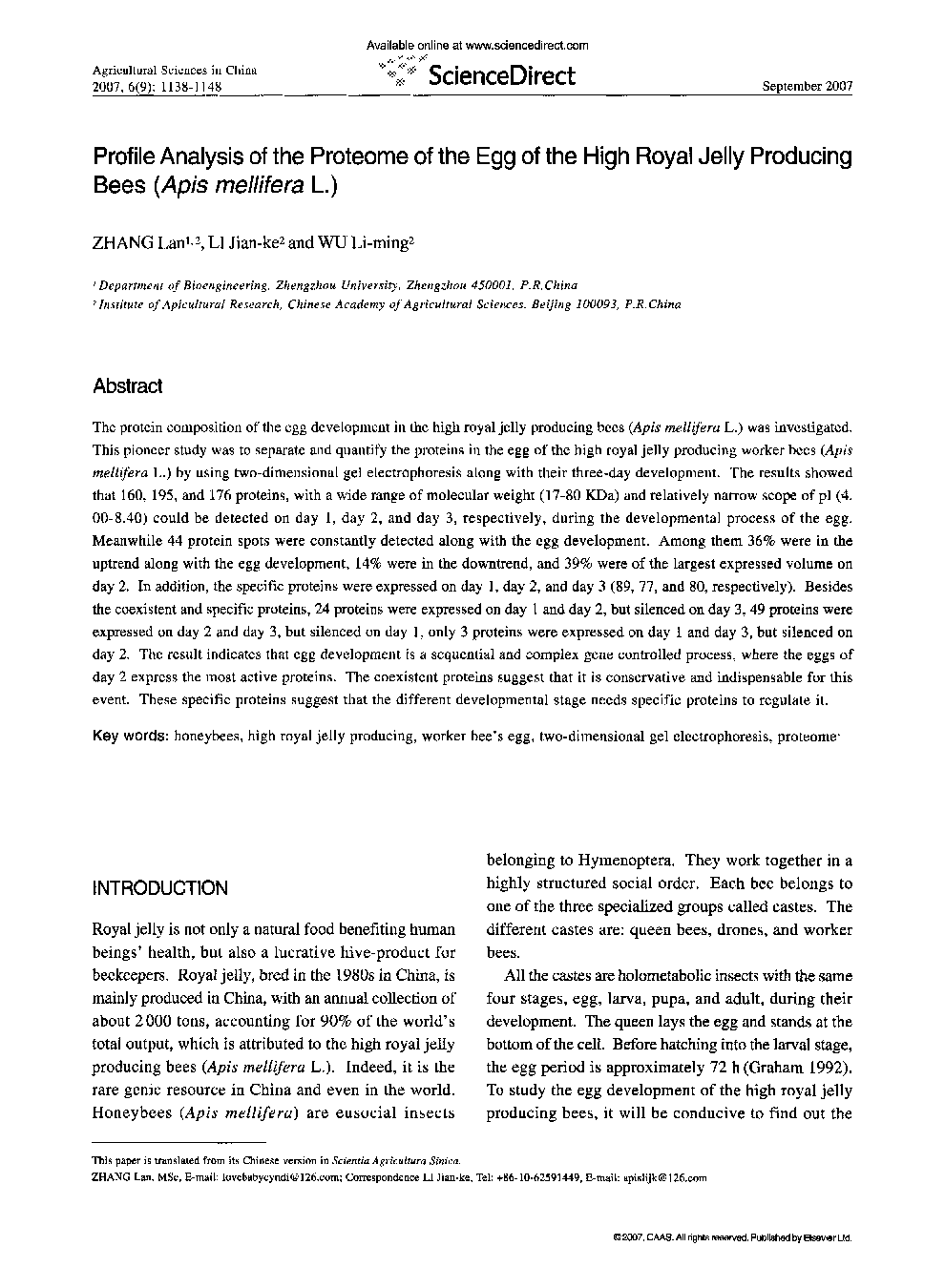| Article ID | Journal | Published Year | Pages | File Type |
|---|---|---|---|---|
| 4490766 | Agricultural Sciences in China | 2007 | 11 Pages |
The protein composition of the egg development in the high royal jelly producing bees (Apis mellifera L.) was investigated. This pioneer study was to separate and quantify the proteins in the egg of the high royal jelly producing worker bees (Apis mellifera L.) by using two-dimensional gel electrophoresis along with their three-day development. The results showed that 160, 195, and 176 proteins, with a wide range of molecular weight (17–80 KDa) and relatively narrow scope of pI (4.00–8.40) could be detected on day 1, day 2, and day 3, respectively, during the developmental process of the egg. Meanwhile 44 protein spots were constantly detected along with the egg development. Among them 36% were in the uptrend along with the egg development, 14% were in the downtrend, and 39% were of the largest expressed volume on day 2. In addition, the specific proteins were expressed on day 1, day 2, and day 3 (89, 77, and 80, respectively). Besides the coexistent and specific proteins, 24 proteins were expressed on day 1 and day 2, but silenced on day 3, 49 proteins were expressed on day 2 and day 3, but silenced on day 1, only 3 proteins were expressed on day 1 and day 3, but silenced on day 2. The result indicates that egg development is a sequential and complex gene controlled process, where the eggs of day 2 express the most active proteins. The coexistent proteins suggest that it is conservative and indispensable for this event. These specific proteins suggest that the different developmental stage needs specific proteins to regulate it.
